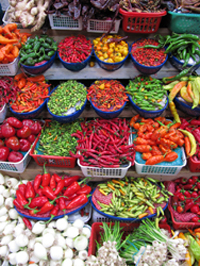As the European Union clamps down on Maximum Residue Levels (MRLs), reducing them by as much as 50 percent in some cases, residue management on harvested crops has been a topic on many grower’s minds. Adding further complications to the issue is the fact that MRLs differ widely between all countries.

For example, the MRL on apple shipments of the commonly used fungicide, captan, is listed in the U.S. at 25 ppm, in China at 15 ppm, in Canada at 5 ppm, and in the EU at just 3 ppm. Similarly, MRLs for the insecticide carbaryl (Sevin) on apples are listed at 12 ppm in the U.S., while Canada will accept 5 ppm and the EU just .05 ppm. In some countries, especially the EU, the MRL is any detectable level for certain inputs. Although there is a standard, called the Codex Alimentarius, developed by the World Health Organization and the Food and Agricultural Organization of the United Nations, that sets recommended acceptable residue levels, its adoption is strictly voluntary. Some countries defer to the Codex, others set their own, much more restrictive standards, and still other countries do not have a list at all.
How do biopesticides help with this vexing problem? Simply put, most biopesticides are exempt from MRLs, giving growers a valuable tool in managing residue limits on their crops. If used exclusively, biopesticides eliminate the need to worry about the MRLs of the export market. More commonly, biopesticides are used in combination with conventional pesticides, but they can still significantly reduce residue because the total chemical pesticide load is decreased. In addition, using biopesticides at the end of the season provides crop protection without adding residue just before harvest and shipment.
